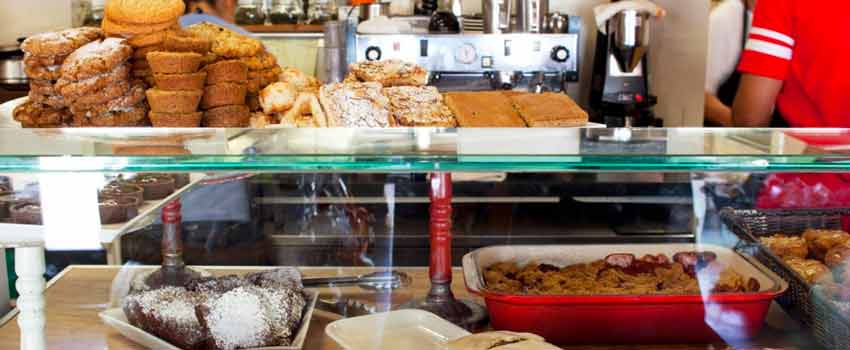The only rule you should write down on a post-it and stick to your forehead is this:
You should only be in this business if you can’t not be in it.
Owning a food business is different than nearly any other. Sell t-shirts? Your material costs probably won’t fluctuate much, your inventory doesn’t need refrigeration or have a shelf life of two weeks. Selling cookies? You’ve got to contend with chocolate prices rising when conflicts break out in West Africa, food waste, broken freezers and labor costs. Loads of labor costs. Starting a delicious enterprise is a physical, mental and emotional challenge. Some are in it because it’s an expression of their creative spirit, some purchase franchises and find themselves managing people rather than greeting customers and others (we call them the smart ones) develop a product, hire a co-packer to manufacture and distribute it so they can focus on building the brand.
I’ve gone through more than a few iterations of this business; selling wholesale, online, at farmers markets and from our tiny rented kitchen in Venice. A few years without sleep and razor-thin margins helped me craft a few key rules. We’ve since incorporated these into our Business of Food class (more info about our alums and consulting clients here) and hope to help future food entrepreneurs learn from some of our bitter and sweet experiences.
1: Be focused. Pick one product and offer a few variations on it. There are tremendous savings in food and labor costs when you have to make one base. Have a ramen food truck? Offer noodles with a choice of two kinds of broth and upsell with condiments. Brownies? Make a variety of flavors using one or two bases. The savings in labor costs will allow you the financial room to use better ingredients.
2. Be the expert. No one will think that the person known for making the best croissants in your city is also going to serve the best ice cream. Food purchases are emotional ones, especially in the specialty food world and in a climate where consumers are getting savvier and distrustful of ‘value’ brands or stores that aren’t carefully curated.
3. Pay well. Training someone to be efficient and care about your mission can take time, and that time will cost you. Engage your employees by showing them they are valued and are integral to the success of the operation that pays them. Make sure your full time employees don’t have to take a second and third job to pay the bills. Side note: a person you hire to scoop cookies should get 300-400 done per hour. Hit me up for scooping tips.
4. Develop your intangible assets. The money you spend on equipment adds little value to your business if your employees aren’t set up with well-developed systems and know how their part plays in the final product. The systems you put into action, whether it’s in the production of your product or how you interact with customers are what make you profitable. I think our most valuable asset is our newsletter. We have over 12,000 subscribers who we reach out to weekly, generating a good number of our sales with every mailing.
5. Underpromise and overdeliver. Every time. Manage your clients’ expectations by providing them a consistently delicious experience, and leave them with a sprinkle of unexpected magic every time they leave. Show them love. Because you wouldn’t be in this business if you could do anything else.
If you’re thinking of getting into the food business, be it bottling a hot sauce or opening a bakery, you can take our Business of Food class or hire one of us to help guide your culinary endeavors. We’ve got experts on staff, from a Michelin-starred chef to successful bottled sauce company owners that can help you with everything from buildout to recipe development and staff training. My business partner Sabrina is also a branding expert who can walk you through and execute a marketing plan.
Wishing you the sweetest day,
Clemence

